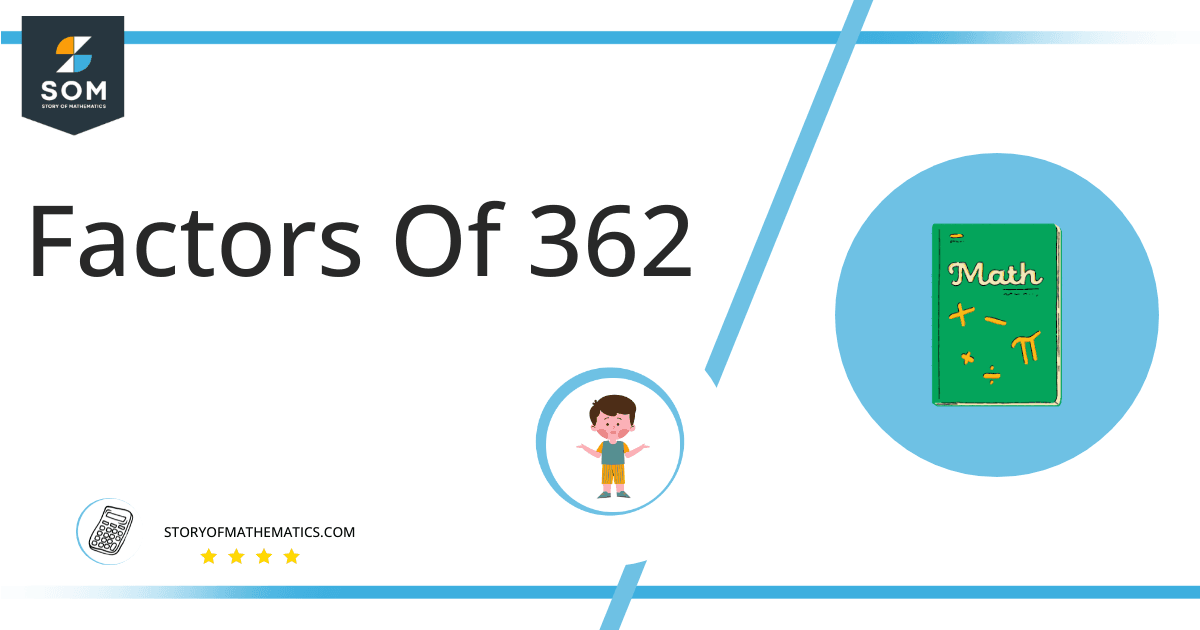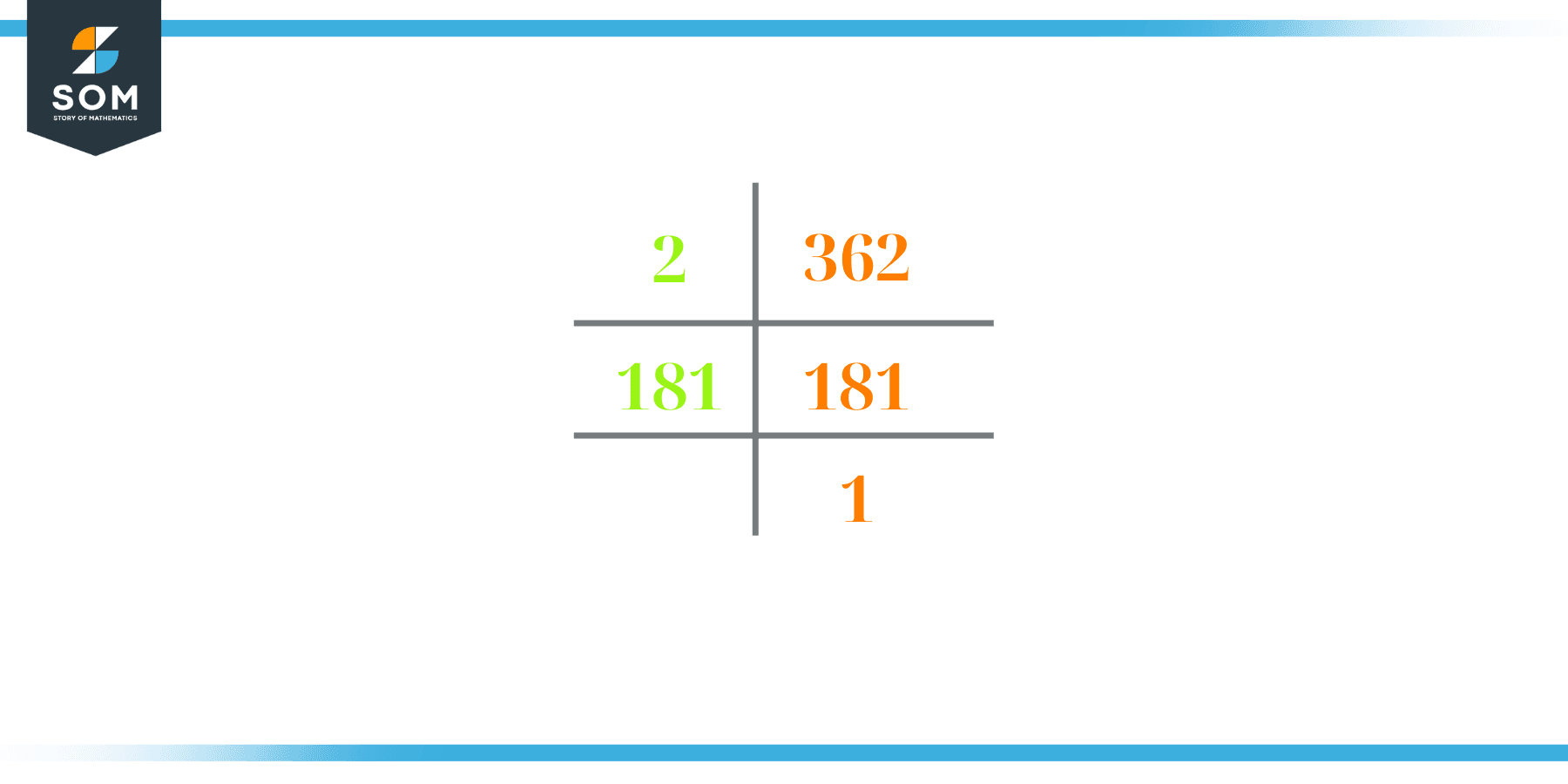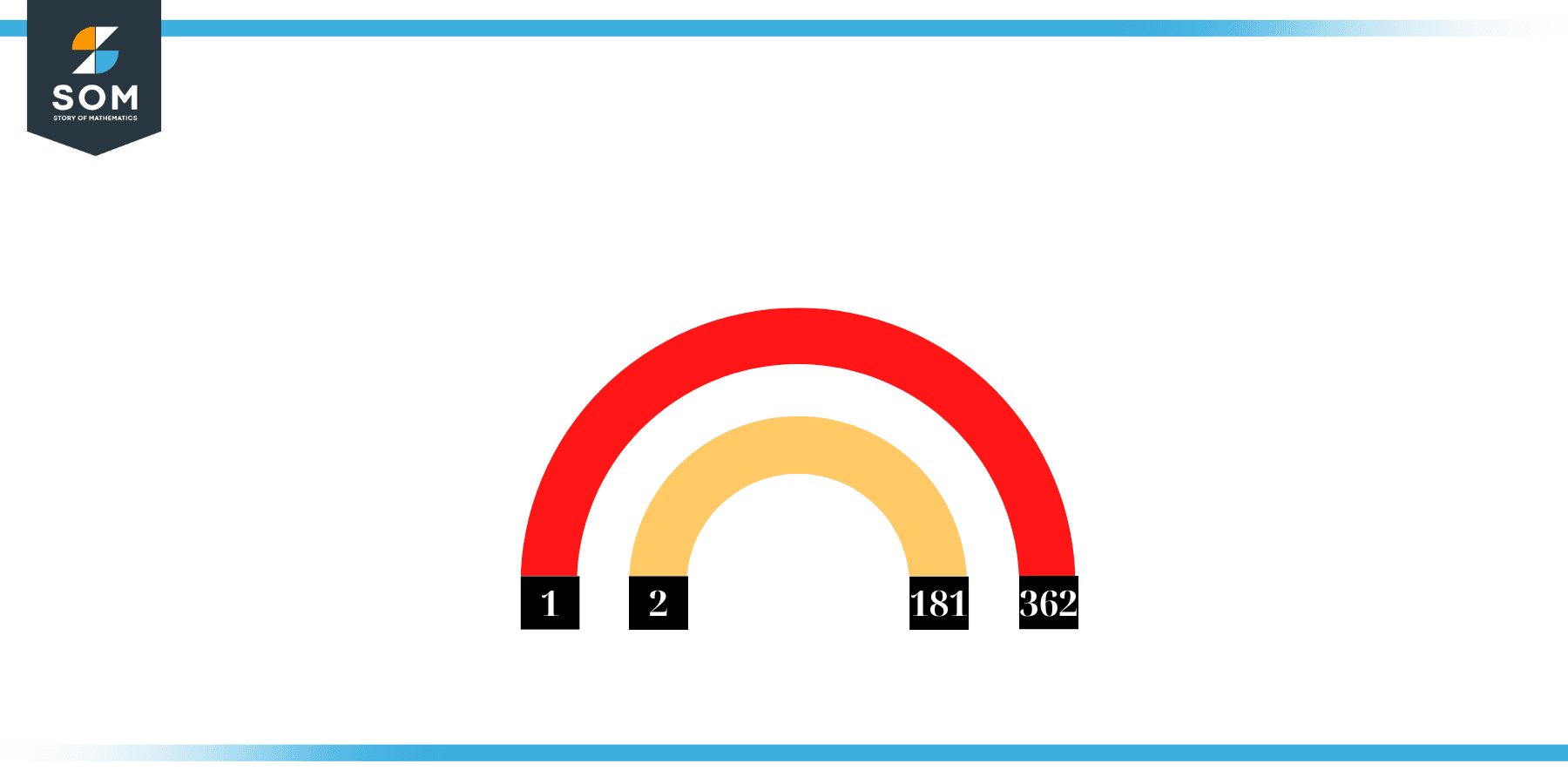JUMP TO TOPIC
Factors of 362: Prime Factorization, Methods, and Examples
The numbers on which the number 362 can be divided evenly are known as its factors.

For such numbers, the factors are both the divisors and the whole number quotients.
Factors of 362
Here are the factors of number 362.
Factors of 362: 1, 2, 181, 362
Negative Factors of 362
The negative factors of 362 are similar to their positive aspects, just with a negative sign.
Negative Factors of 362: -1,- 2, -181, -362
Prime Factorization of 362
The prime factorization of 362 is the way of expressing its prime factors in the product form.
Prime Factorization: 2 x 181
In this article, we will learn about the factors of 362 and how to find them using various techniques such as upside-down division, prime factorization, and factor tree.
What Are the Factors of 362?
The factors of 362 are 1, 2, 181, and 362. These numbers are the factors as they do not leave any remainder when divided by 362.
The factors of 362 are classified as prime numbers and composite numbers. The prime factors of the number 362 can be determined using the prime factorization technique.
How To Find the Factors of 362?
You can find the factors of 362 by using the rules of divisibility. The divisibility rule states that any number, when divided by any other natural number, is said to be divisible by the number if the quotient is the whole number and the resulting remainder is zero.
To find the factors of 362, create a list containing the numbers that are exactly divisible by 362 with zero remainders. One important thing to note is that 1 and 362 are the 362’s factors as every natural number has 1 and the number itself as its factor.
1 is also called the universal factor of every number. The factors of 362 are determined as follows:
\[\dfrac{ 362}{1} = 362\]
\[\dfrac{ 362}{2} = 181\]
\[\dfrac{ 362}{181} = 2\]
\[\dfrac{ 362}{ 362} = 1\]
Therefore, 1, 2, 181, 362 are the factors of 362.
Total Number of Factors of 362
For 362, there are 4 positive factors and 4 negative ones. So in total, there are 8 factors of 362.
To find the total number of factors of the given number, follow the procedure mentioned below:
- Find the factorization/prime factorization of the given number.
- Demonstrate the prime factorization of the number in the form of exponent form.
- Add 1 to each of the exponents of the prime factor.
- Now, multiply the resulting exponents together. This obtained product is equivalent to the total number of factors of the given number.
By following this procedure, the total number of factors of 362 is given as:
Factorization of 362 is 1, 2, 181, 362.
The exponent of 1, 2, 181, and362 is 1.
Adding 1 to each and multiplying them together results in 8.
Therefore, the total number of factors of 362 is 8. 4 is positive, and 4 factors are negative.
Important Notes
Here are some essential points that must be considered while finding the factors of any given number:
- The factor of any given number must be a whole number.
- The factors of the number cannot be in the form of decimals or fractions.
- Factors can be positive as well as negative.
- Negative factors are the additive inverse of the positive factors of a given number.
- The factor of a number cannot be greater than that number.
- Every even number has 2 as its prime factor, the smallest prime factor.
Factors of 362 by Prime Factorization
The number 362 is a composite/prime number. Prime factorization is a valuable technique for finding the number’s prime factors and expressing the number as the product of its prime factors.
Before finding the factors of 362 using prime factorization, let us find out what prime factors are. Prime factors are the factors of any given number that are only divisible by 1 and themselves.
To start the prime factorization of 362, start dividing by its most minor prime factor. First, determine that the given number is either even or odd. If it is an even number, then 2 will be the smallest prime factor.
Continue splitting the quotient obtained until 1 is received as the quotient. The prime factorization of 362 can be expressed as:
362 = 2 x 181
Factors of 362 in Pairs
The factor pairs are the duplet of numbers that, when multiplied together, result in the factorized number. Factor pairs can be more than one depending on the total number of factors given.
For 362, the factor pairs can be found as:
1 x 362 = 362
2 x 181 = 362
The possible factor pairs of 362 are given as (1, 362) and (2 ,181).
All these numbers in pairs, when multiplied, give 362as the product.
The negative factor pairs of 362 are given as:
-1 x – 362 = 362
-2 x -181 = 362
It is important to note that in negative factor pairs, the minus sign has been multiplied by the minus sign, due to which the resulting product is the original positive number. Therefore, -1, -2, -181, and -362 are called negative factors of 362.
The list of all the factors of 362, including positive as well as negative numbers, is given below.
Factor list of 362: 1, -1, 2, -2,181, -181, 362, and – 362
Factors of 362 Solved Examples
To better understand the concept of factors, let’s solve some examples.
Example 1
How many factors of 362 are there?
Solution
The total number of Factors of 362 is 8.
Factors of 362 are 1, 2, 181, and 362.
Example 2
Find the factors of 362 using prime factorization.
Solution
The prime factorization of 362 is given as:
362 $\div$ 2 = 181
181 $\div$ 181 = 1
So the prime factorization of 362 can be written as:
2 x 181 = 362
